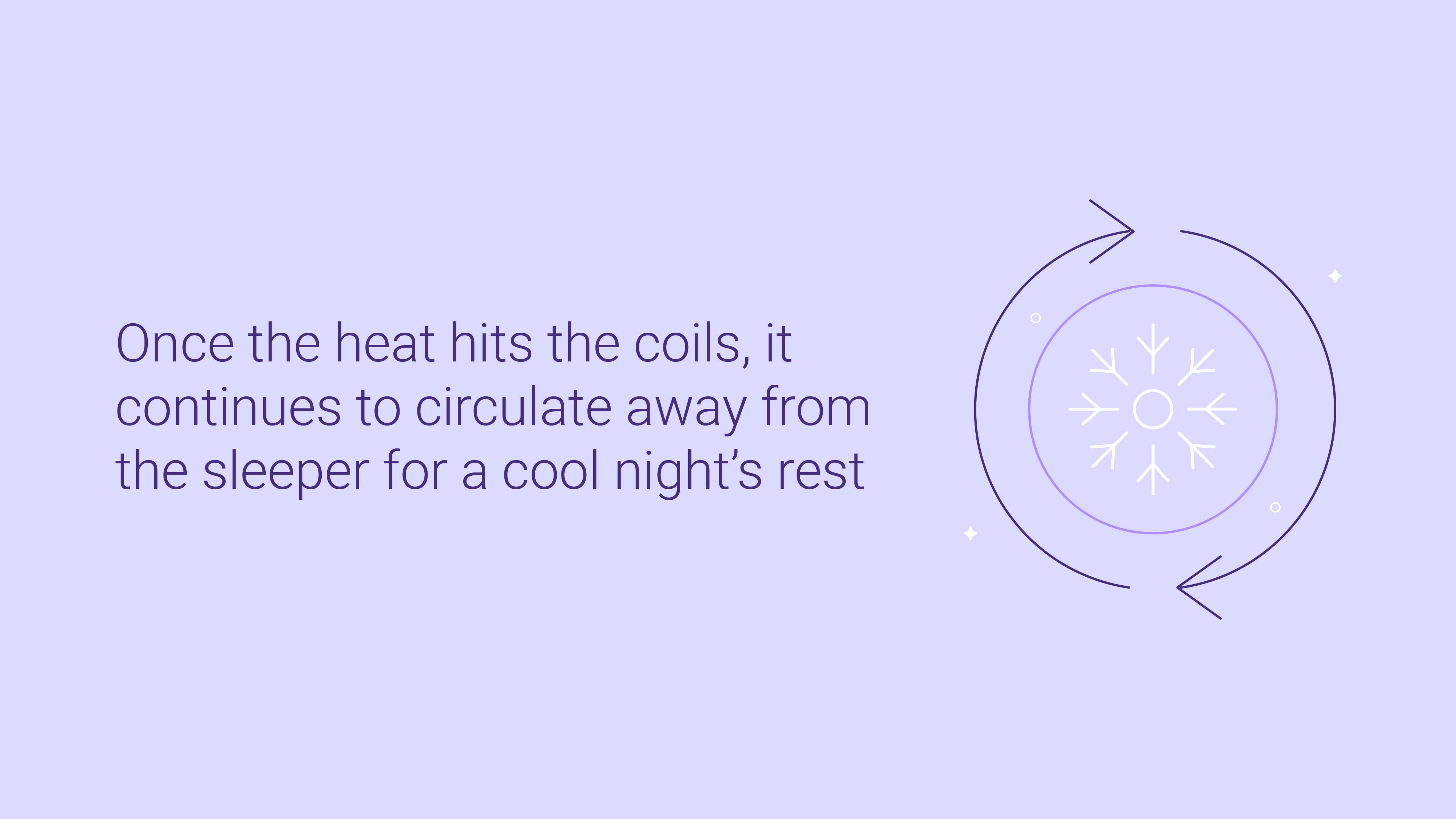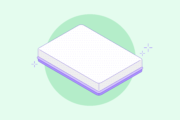
What is a Hybrid Mattress?

- Hybrid mattresses combine the best features of traditional innerspring, memory foam, and latex models, offering a versatile sleep experience. The diversity in layer combinations allows for customization to suit individual preferences.
- Hybrids typically consist of a comfort layer, transition layer, and coil support layer. The comfort layers provide soft cushioning and contouring, with materials like memory foam or latex. The transition layer offers support and may vary in firmness and density. The coil support core enhances durability and responsiveness.
- Hybrids provide responsiveness, temperature regulation, and a balance between bounce and contouring. However, potential drawbacks include noise, motion transfer, and a higher price point. Understanding individual needs, sleep positions, and preferences is crucial to deciding if a hybrid mattress is the right choice.
A good night’s rest starts on the right mattress. You’re probably familiar with innerspring and memory foam models. You may even have seen latex mattresses. Hybrids take some of the best features of these traditional mattress types and combine them for a unique sleep experience. However, hybrids are a diverse mattress category due to the number of possible layer combinations.
The Materials Used in a Hybrid Mattress
The construction of hybrid mattresses varies from manufacturer to manufacturer and even model to model within the same brand. At their most basic, hybrids consist of a comfort layer, transition layer, and coil support layer or core. However, some models have two comfort layers with no transition layer or only one thick comfort layer. Any mattress with a coil support core and a comfort layer that’s over two-inches thick is considered a hybrid mattress.
Comfort and Transition Layers
Comfort layers are those that are closest to the sleeper. Some hybrids have two, but more than that is rare. To be considered a true hybrid and not an innerspring mattress, the comfort layer must be at least two inches thick. Comfort layers offer soft cushioning and contouring.
Transition layers provide support and cushioning between the comfort layers and the firmer support core. The transition layers may be made of the same materials as the comfort layers but usually have different firmnesses and densities based on the manufacturers’ goals for the mattress. For example, a memory foam layer may be used in a transition layer to add conformability to a latex top layer. In a different mattress, latex may be used in the transition layer to add responsiveness to a memory foam comfort layer.
Poly-foam
Polyurethane foam or poly-foam is a common mattress material that’s used in the comfort and transition layers of a hybrid model. It’s relatively inexpensive to produce and can be made in different densities and firmnesses. Poly-foam responds quickly to movement and cushions the body, but it’s not as durable as memory or latex foam.
Memory Foam
Memory foam stretches and conforms under heat and pressure. It cushions the body while supporting high-pressure points like the shoulders and hips. The longer you lay on memory foam, the more it relieves pressure and conforms to the shape of the body.
Latex Foam
Latex foam may be made of natural or synthetic latex. Natural latex is made from the sap of the rubber tree, while synthetic is derived from petrochemicals. Natural latex is divided into two types— Dunlop and Talalay. Dunlop latex is denser and firmer while Talalay is lighter and bouncier. Both provide body contouring and excellent responsiveness to movement. Synthetic latex feels similar to natural latex but doesn’t have the quality and durability, so it tends to break down faster.
Support Layer/Core
Hybrid support cores are made of coils. Most have a pocketed coil design, wherein the coils are the same diameter from top to bottom and are individually wrapped in fabric. This design isolates motion and provides targeted pressure relief at pressure points. Some hybrids have a coil-on-coil design with an extra layer of micro coils acting as a transition layer between the foam and firmer support coils.
Material Quality
Most hybrids last between seven and nine years. When determining quality, take a good look at the mattress warranty. Ten years is the industry standard since mattresses generally last somewhere between six to ten years. A mattress with a longer than average warranty suggests better material quality. Otherwise, the manufacturer wouldn’t be willing to stand behind their product longer than ten years.
Check for the indentation coverage in the warranty. Some warranties cover indentations as small as .75 inches while others don’t cover indentations until they’re 2 inches deep. Those mattresses with shallower indentation coverage are probably made of higher quality materials.
Foams
You can determine a mattress’s quality and feel by taking into account both the ILD and the density of the foam layers. Foams are given an Indentation Load Deflection (ILD) rating. It refers to the pounds of pressure needed to press the foam to a depth of four inches. A low ILD number indicates a softer, plusher foam, while a high ILD indicates a firmer foam.
Dense foams last longer. A 12 x 12 piece of dense foam will be heavier than a less dense foam piece of the same size. Denser foams can still offer comfortable cushioning. However, they will be heavier and more supportive than less dense foam layers.
Coils
You’ll often see retailers advertise mattresses based on their coil count. While that is one factor in determining comfort, a more important indicator of quality and comfort is the coil gauge. Coils vary in thickness or gauge— the higher the gauge, the thinner the coil. The thinnest coils measure 18mm, while the thickest are around 12mm. Thicker coils last longer. However, they’re also firmer.
Some hybrids have a zoned coil support system, which means there are coils of various gauges throughout the mattress based on where the sleeper needs more or less support like the shoulders and hips. Some also have thicker coils at the edges to strengthen edge support.
Pros, Cons, and Characteristics of Hybrids
Hybrids combine the bounce and support of coils with the contouring and conformability of foam. The pros and cons that come with these combinations can help you decide if a hybrid mattress is right for you.
Pros
Responsiveness
Hybrids have more bounce and response to movement than all-foam or memory foam mattresses. Yet, they can still provide targeted pressure relief, especially if they have zoned comfort, transitions, or support layers.
Temperature Regulation
As long as the comfort and transition layers have cooling technology like aeration channels and/or gel memory foam, hybrids can be cooler than a foam mattress and warmer than an innerspring. The right cooling technologies improve breathability by allowing heat and air to move away from the sleeper. Once it gets to the coil layer, heat continues to dissipate.
Comfort Compromise
Some people love foam and seek mattresses without springs, while others can’t sleep without coils. Hybrids are the perfect compromise for couples who struggle with different comfort and mattress preferences.
Cushioning and Contouring
Hybrids provide the firm responsiveness of coils with the well-cushioned contouring you’re more likely to find in a foam model. The foam layers provide individualized pressure relief to accommodate different sleeping positions.
Cons
Potential for Noise
Coils are more prone to noise. While a hybrid has thicker comfort and transition layers than an innerspring mattress, it will still be noisier than an all-foam or memory foam model.
Motion Transfer
Responsiveness is a strength of coils. However, it also means more motion will transfer across the mattress, and that can be a problem for some couples.
Price
Hybrids can combine several complex technologies or construction methods, which may make them more expensive than other mattresses of comparable firmness and quality.
Hybrid Prices
Hybrids bring together a number of technologies, which makes them more complex to produce. They often have more layers than comparable mattresses, making them heavier too. Prices start at around $800 and can go up to around $4,000. However, the average hybrid comes in at around $2,000 to $2,500.
Hybrids in Comparison to Other Mattress Types
Hybrids combine the best of the foam and innerspring worlds. They often have better edge support and responsiveness than foam mattresses and better cushioning and conformability than innerspring mattresses. However, these mattress types may have a characteristic that hybrids lack.
Memory Foam Mattress
All or most layers of a memory foam mattress are made of memory foam. Some models may have poly-foam transition layers or a dense poly-foam support core. Memory foam layers can be made in different firmnesses and densities to vary the feel of the mattress. Memory foam is known for relieving pressure by conforming to every curve of the body and for impressive motion isolation. They’re a great choice for side sleepers and couples.
However, while memory foam can establish excellent mattresses for motion isolation and pressure relief, they’re also known for trapping body heat. Models with gel, copper, or graphite mixed into the memory foam along with aeration channels drastically improve breathability. Other models have larger than average cell structures to make room for more heat and air to escape.
Latex Mattress
Latex foam is similar to memory foam and, in some models, is used in place of it. Latex foam contours to the body and relieves pressure. However, it has better responsiveness than memory foam, so it bounces back into its original shape faster. Like memory foam, latex has excellent motion isolation. Latex can trap heat, so it has to have aeration channels or cutouts that create space for air to move. Latex mattresses can be expensive, especially if they’re made of natural latex.
Innerspring Mattress
Traditional innerspring mattresses consist of a thin layer of foam either quilted to the mattress cover or beneath the cover and cushions the body over a coil support core. Innerspring mattresses have excellent responsiveness and breathability.
Innerspring models also have better edge support than foam models. However, they can be stiffer and less able to relieve pressure. Some have a pillow top or Euro-top for added cushioning to correct this. They also transfer more motion and are noisier too.
Not all pillow top mattresses are traditional innerspring mattresses, though. There are hybrid models with pillow tops or Euro tops, along with more standard comfort foam layers.
Hybrids and Sleeper Comfort
A number of personal factors come into play when you’re looking for a comfortable mattress. Your weight, medical conditions, and personal preferences like sleeping hot or cold make a big difference in what feels good to you.
One of the most important factors is your preferred sleep position. Because hybrids are found at all firmness levels, sleepers of all sleep styles have the potential to sleep well on a hybrid. However, it’s a matter of what feels good to you. The different sleep positions will have to look for different characteristics in their hybrid.
- Side Sleepers: Side sleepers need cushioning and pressure relief at the shoulders and hips with support at the head, lower back, and knees. Comfortable mattresses for side sleepers are typically medium in firmness and made with zoned support and plenty of comfort layers to cushion the hips and support the spine.
- Back Sleepers: Back sleepers naturally maintain spinal alignment, which makes it easier for them to find a mattress that feels good. However, they still need support for the lower back. Models in the medium to medium-firm range tend to work well.
- Stomach Sleepers: Stomach sleepers have to watch out for sinkage at the hips, which strains the lower back. Models with a medium-firm to firm rating are more likely to be comfortable.
- Combo Sleepers: Combo sleepers move through several positions throughout the night. Medium to medium-firm mattresses work well because they’re generally comfortable for a wide range of positions. Combo sleepers also sleep better on foams with more responsiveness that accommodate their changes in sleep position.
Special Sleeper Circumstances
Couples
Hybrids often provide comfort for couples who have different mattress preferences. They’re a good option because they have the traditional feel and support of coils with the cushioning and pressure relief of foam.
Heavy or Lightweight
People who are heavier than average, over 230 pounds, need firmer support to prevent sagging in the mattress. The right hybrid can provide both the firm support needed in the support core and cushioning from the top layers.
Those who are lighter than average, below 130 pounds, may not need as much support. Lightweight sleepers need a hybrid that falls in the soft to medium range.
Hot or Cold Sleeper
In a hybrid, temperature regulation depends on the comfort and transition layers of the mattress. A hybrid with cooling technology like gel infusions or convoluted structures will help move heat away from the sleeper. Once the heat hits the coils, it continues to circulate away from the sleeper for a cool night’s rest.

For those who sleep cold, a hybrid with several comfort and/or transition layers will be warmer. However, if you’re constantly frigid, a foam model may be a better option.
Frequently Asked Questions
Are hybrid mattresses better than foam mattresses?
It depends on personal preference—those who prefer bouncy beds will likely prefer hybrids over memory foam mattresses. Both hybrids and memory foam mattresses are available in different firmness options to appeal to a variety of sleepers. In terms of durability, though, memory foam mattresses tend to last longer than hybrids, but their average lifespans only differ by one or two years.
Do hybrid mattresses need a box spring?
Hybrid mattresses are best paired with solid or slatted mattress foundation, not box springs. Box springs are really only compatible with innersprings because these mattress supports can cause sagging foam beds. Hybrids should not be paired with box springs because they can damage foam layers.
Are hybrid mattresses good?
Yes and no. Like all mattresses types, there’s good hybrids and bad hybrids. Hybrids made of inexpensive, low-quality materials will break down and cause uncomfortable sleep. However, hybrids made with durable coil systems and comfortable foam layers can deliver better sleep.
Are hybrid mattresses comfortable for side sleepers?
Side sleepers need a mattress soft enough to cushion the shoulders and hips but still firm enough to maintain healthy alignment. Hybrids that offer that balance of comfort and support are a great choice for side sleepers. Typically, side sleepers find medium and medium-soft hybrids the most comfortable mattress for their needs.
How long will a hybrid mattress last?
Hybrid mattresses last around 6 or 7 years when built with quality materials. Cheaper hybrids will likely break down sooner, though.
Hybrid Mattresses: The Bottom Line
- Hybrids provide the support of coils with the additional cushioning and contouring of foam comfort and transition layers.
- They’re cooler than foam mattresses and warmer than innerspring models.
- They can be expensive due to the number of layers and technologies combined in their construction.
Hybrids may be the perfect solution to all-night comfort for some sleepers. However, sleep comfort is a highly personal decision. What feels good to one person doesn’t necessarily feel good to another. Base your decision on your dominant sleep position, comfort preferences, and personal circumstances. Remember, the best mattress for you is the one that lets you get a good night’s rest night after night.



